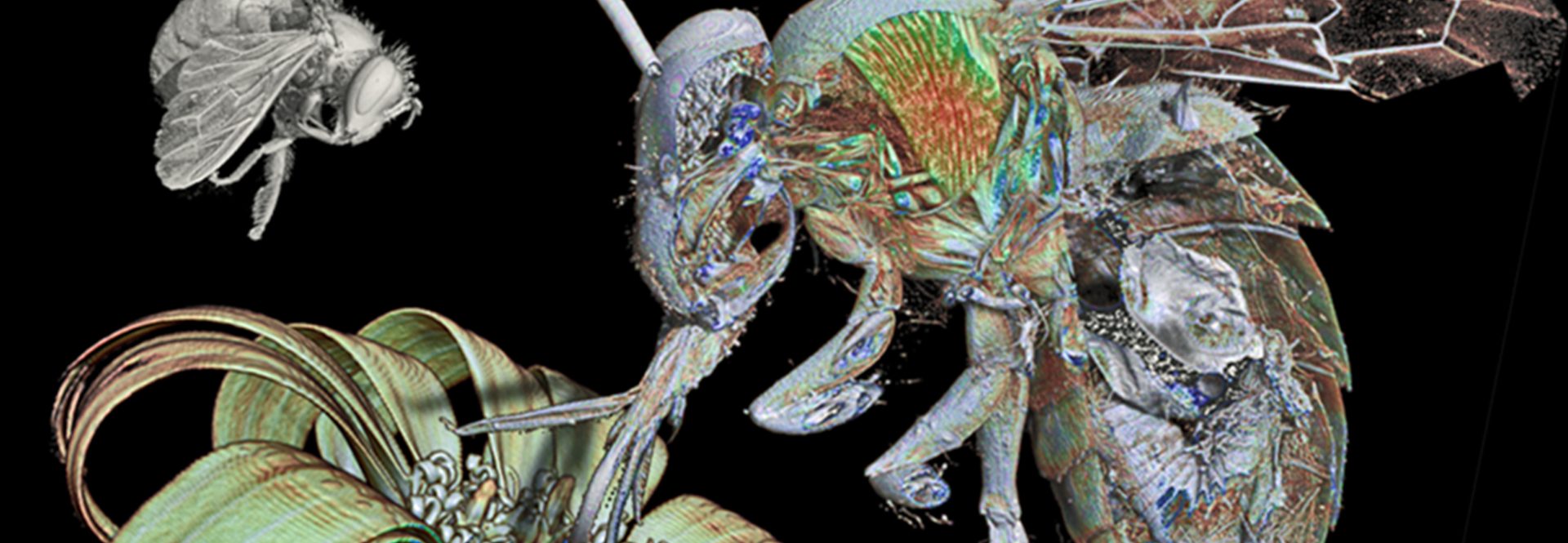

Experiences in the Use of Micro-CT in Insect Research
Webinar Overview
High resolution microtomography (micro-CT) despite it is not a new technique, nowadays it is being used routinely in science. Mostly it is being used as a substitute to microscopy to look at/for external and internal structures. However, it can be used to clarify non-answered questions, and also for educational purposes. And in many cases simply it represents itself, Art.
The main advantage is that it is a non-destructive technique, and once the sample has been scanned, the reconstructed images can be stored, and at any time viewed, rotated, sliced, etc…, making it possible to study details of external and internal structure in any possible perspective. The author uses a high resolution Skyscan desktop micro-CT with a maximun voxel size resolution 0.48µm. He will share experiences of different studies exemplifying how micro-CT resulted an unvaluable tool to unveil functional anatomical, as well biological aspects of different insect orders and species. The talk will be illustrated with high resolution images, and videos to demonstrate how thanks to micro-CT it is possible to do amazing trips inside the insects. Moreover “real” entomological models can be visualized, rotated, cut, etc…, in an interactive mode, when using mobile devices (smartphones and tablets), resulting good tools for research, very attractive for the students, and thereafter very promising for educational purposes. In any case, many of the obtained results have a nice visual artistic appearance, and attenders will understand why we consider that the Micro-CT represents a tool straddling scientist research, art and education.
Thursday June 17, 2021
04:00 PM CEST
Key Topics
- Use of microCT for anatomical research in insects and other species
- Contrasting techniques for microCT imaging
- 3D visualisation of microCT data
- Advantages of microCT compared to histology for anatomical analysis
Who Should Attend?
Academic researchers, doctoral students, post-docs, biologists, biomedical scientists and museum scientists in the field of insect and zoological research an classification biology.
Speaker
Prof. Dr. Javier Alba-Tercedor
Professor of Zoology, University of GranadaHe is a full Professor of Zoology at the Department of Zoology of the University of Granada in Spain, where he has been teaching since October 1st of 1977. Since then he have been teaching different subjects.
He conducted research and did stays in institutions and universities of different countries: Poland, Check Republic, Australia, Canada, and USA. The main topics of his research have been on aquatic macroinvertebrates: taxonomical and ecological aspects (mainly with insects, and mostly on mayflies and stoneflies), describing new species from Europe, North and South America, Africa, and Australia. A lot of effort of his carrier it has been the use of aquatic macroinvertebrates for bioassessment of watercourses degradation. Thus, he developed the method IBMWP (Iberian Biomonitoring Working Party) nowadays official to assess the Ecological Status of the Spanish water courses to achieve the exigencies of the European Frame Water Directive, and he participated as scientific expert during the preliminary development that directive. As a result, he has publish more than 240 titles (papers, books, chapters, reports, press news, etc.) on these subjects. However, he recognizes that since he first glimpsed the possibilities of micro-CT, and since in 2010 he started to work with microtomography, micro-CT has become his main passion and he has been doing research with this technique non only for anatomical studies, but what he likes to says as “unveiling mysteries in science”. Thank to these micro-CT works he was awarded several times during the annual international Skyscan/Bruker micro-CT user’s meetings he participated. But he stresses that without a doubt the most curious experience that his passion for microtomography has led to him it was the collaboration with the film industry. Thus he collaborated with the Canadian BUF’s visual effects company by scanning the beetles appearing in the film “Blade Runner 2049” that won 2018 Best Visual Effects Oscar in Hollywood. Most of his recent micro-CT papers have been publish in the journals PLoS One and Scientific Reports of Nature.